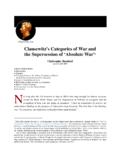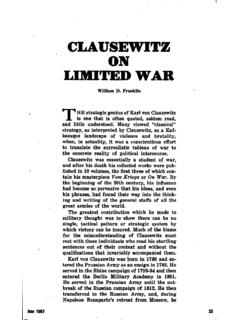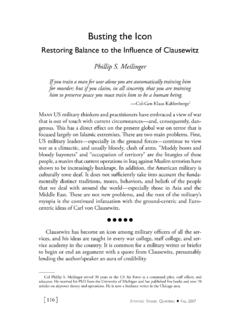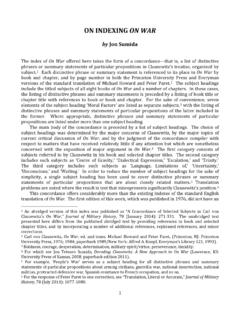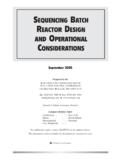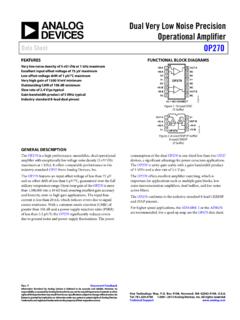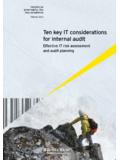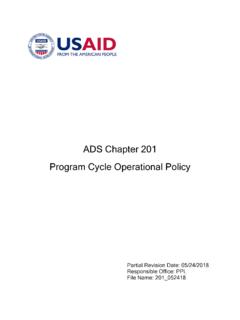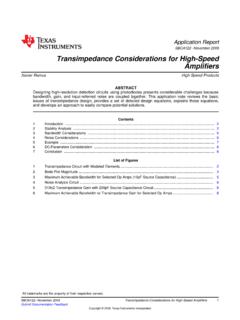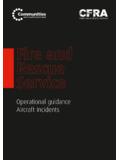Transcription of Operational Culture for theWarfighter:Principles ...
1 OperationalCulturefortheWarfighterPrinci ples andApplicationsBarak A. SalmoniPaula Holmes-EberForeword byGeneral James N. Mattis, USMCO perationalCulturefortheWarfighter:Princi plesandApplicationsis a comprehensive textbook, reference, and planning tool. It ad-dresses the critical need of the Marine Corps to provide operationallyrelevant cultural teaching, training, and analysis. This book links so-cial science paradigms to the needs of Marines using an applied an-thropology text links fundamental features of Culture (environment, economy, social structure, political structure and be-lief systems)
2 To the challenges of military operations in different cul-tures around the on the research and field experiences of Marines them-selves,OperationalCulturefortheWarf ighteruses case studies fromaround the world to illustrate the application of cultural principlesto the broad expeditionary spectrum of today and tomorrow s Ma-rine Corps combat operations,counterinsurgency,stability and re-construction operati ons,humanitarian affairs and disaster relief,andtraining and operating with foreign allies and intended for use by Marineleaders at all levels,in professional military education,planning, A.
3 Salmoniis a research analyst and project leader with theRAND Corporation inWashington ,where he focuses on MiddleEast strategic issues as well as joint military training and educationfor leade r development. From 2005 to 2008 he was deputy directorof the Marine Corps Center forAdvanced Operational Culture Learn-ing. He holds a PhD in Middle Eastern Studies from Harvard Uni-versity and has taught at Harvard,the University of Pennsylvania,andthe Naval Postgraduate Holmes-Eberis professor of Operational Culture at MarineCorps University, where she teaches Culture courses for all four PMEschools.
4 She holds a PhD in anthropology from Northwe stern Uni-versity. Previously she taught at the University of Wisconsin Mil-waukee as an assistant professor of anthropology and as a visitingscholar at the Jackson School of International Studies at the Univer-sity of and Holmes-EberOperationalCulturefortheWarfi ghterPrinciples andApplicationsMARINE CORPS UNIVERSITYQUANTICO, Holmes-EberProfessor of Operational CultureMarine Corps UniversityMarine Corps University Press3079 Moreell AvenueQuantico, Virginia22134www. General James N.
5 Mattis, of the the Problem: Irregular Warfare Significance of CultureBack to Culture in the Military and We Cross the Line of ITerms of ReferenceChapter One: Historical Approach to Culture in Conceptual Five Operational Culture Two: Defining Definitions of : An Operational Culture to Operational Culture ..43iiiPart IIFive Operational Culture Dimensions forPlanning and ExecutionChapter Three: Dimension I The Physical Culture Groups Relate to their of the Physical for ShelterClimate and SeasonsFuel and PowerChapter Four.
6 Dimension Two The 3 Formal and Informal Economic and Services in the Informal EconomyPeople Who Participate in the Informal EconomyEconomy as a Dynamic Network of and Communal DistributionDirect Reciprocal ExchangeSymbolic Directional ExchangeEconomy as a Way of Structuring Social ProductionChapterFi ve: Dimension Three The Social Social Affecting Position Within the Social and Tribal MembershipClassEthnicity and Ethnic MembershipReligious MembershipivChapter Six: Dimension Four The Political Structures Holds Power: Cultural Forms of and Informal LeadershipLeadership in Acephalous SocietiesEpisodic LeadersCouncils and OligarchiesHere ditary LeadershipDictators and StrongmenElected and Selected LeadershipConflicts Over Power: Challenges toExisting Political Seven.
7 Dimension Five Belief Features of Belief , Imagined Memory, and FolkloreIconsSymbols and CommunicationRitualsReligious ReligionInformal ReligionPart IIIT oward Applying Operational CultureChapter Eight: From Models to Dimensions toObservable Study I Nigeria: Oil and Burgeoning Insurgency ..206 Case Study II Darfur: Environment,Economy, Ethnicity, and : Kinship Politics and the Geographic-Religious Divide ..220 Chapter Nine: Operational Culture Training and EducationInitial Issues for of Operational CultureLe arningAcross the Domains.
8 248 Keying Operational Culture the Appropriate DomainsProfessional Military EducationPre-Deployment TrainingMetabolizing Operational as Cultures: The Marine of Military Doctrine: Congruence withOperational Considerations are Operational Culture ThemesDoctrine Misused is Operational Culture MisconstruedAppendicesAppendix A: G lossary of B: Culture Operator s the and our allies face a complex but earnest combat will continue to demand timeless warfightingqualities of initiative, aggressiveness, combined arms skills, ethicaldecision-making, and , history tells us that a military force unwilling to change, want-ing to fight in the old-fashioned way, is doomed to defeat, regard-less of the bravery of its Marine Corps has proven to be highly adaptive.
9 During ChestyPuller s lifetime, our Corps shifted from what can be described asnaval infantry dispersed in ships detachments, to trench warfare as-sault troops, to small wars practitioners, to combined-arms am-phibious assault troops, to extended land operations alongside ourcomrades in the Army, to counterinsurgency troops always main-taining the Corps ability to defend our adaptation continued in the 1990s as Marines anticipated andprepared for the three-block wars we have been fighting in Iraqand Afghanistan since to our adaptation to today s conflict will be the intel-ligent initiative of all Marines when the enemy hides among inno-cent people.
10 This demands a keen understanding of Culture thesort of skill practiced by Chesty and his shipmates in the jungles ofHaiti and Nicaragua when they served as advisors to , in today s information age, we must recognize thatthe esse ntial key terrain is the will of a host nation s has been demonstrated by our troops in al-Anbar, Iraq, andpermits us to gain the trust of skeptical populations, thus frustrat-ing the enemy s efforts and suffocating their superb textbook, a collaboration between our Corps Centerfor Advanced Operational Culture Learning and the Marine CorpsviiUniversity, enables today s Marines to continue their never-endingadaptation to war, keeping our Marines at the top of their game andable to confront and defeat our enemies.
